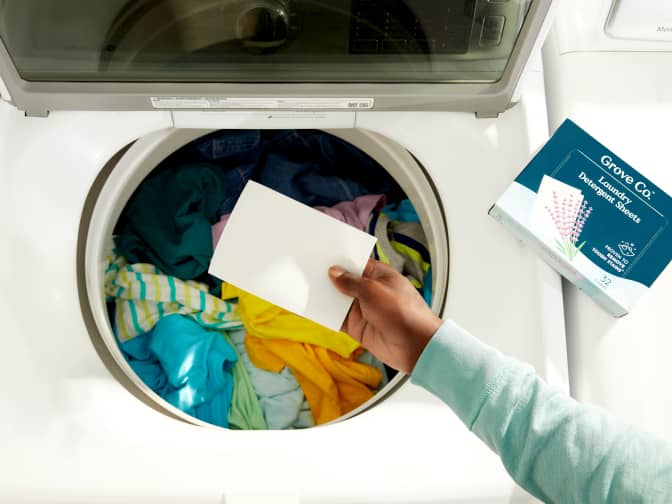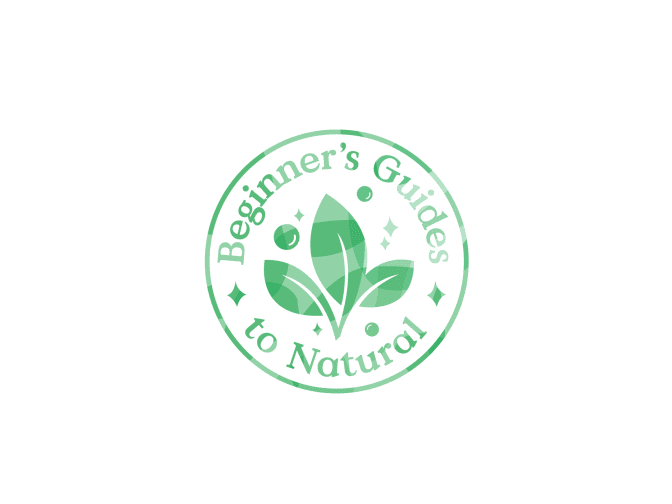
How do laundry detergent sheets work?
Learn about zero-waste laundry soap sheets from Lead Grove Guide Angela Bell.
Read More


Last Updated: August 6, 2024
Dryer balls made from wool are an environmentally-friendly alternative to dryer sheets — but are they right for your family and will they really dry and soften your clothes?
Dryer sheets get rid of static cling and leave clothes feeling oh-so-soft, but are they doing more harm than good? If you’re looking to reduce your environmental impact — not to mention your family’s exposure to harmful chemicals found in conventional dryer sheets — natural wool dryer balls may be the sustainable alternative you’ve been seeking.
Learn more about the benefits of wool dryer balls, how to find the best wool dryer balls for your drying machine, plus tips on how to incorporate them into your laundry routine.

In a nutshell, conventional dryer sheets help reduce static cling, softens fabrics, and leave clothes smelling fresh. Conventional dryer sheets contain a thin layer of fabric softener that targets electrostatic charges and can even help guard against lint. But dryer sheets are a nicety, not a necessity.
The Consumer Product Safety Commission does not require manufacturers to disclose the ingredients used in dryer sheets, so you never really know what you're getting. Many contain harsh chemicals and added fragrances that adhere to fabrics, vent into the air, and ultimately rub off on your skin, potentially triggering asthma and skin reactions.

From an environmental standpoint, they are a single-use product that could potentially be emitting harmful toxins into the air and onto your clothes. If you need proof, just look at some of the ingredients in dryer sheets noted on the EPA's hazardous waste list.
And while these lovely little sheets may not be as toxic as some claim, more research is needed to determine whether fragrances used in dryer sheets are harmful to your health.
Deemed a safer choice by many experts, wool dryer balls are an environmentally responsible alternative to traditional dryer sheets. Natural and chemical-free, 100 percent wool dryer balls are hypoallergenic, too, making them a smart choice for those with sensitive skin, including clothes for babies and kids.

Yes! Working their softening magic by bouncing off clothes, wool dryer balls work best with small and medium loads, so they have room to roam around.
Not only do they retain heat, they also help clothes stay separated in the dryer so air can flow more freely. This can reduce drying time by 25 percent per load.
Wool dryer balls owe much of their eco-friendliness due to the fact that they're reusable and last a long time. But did you know they can last for as many as 1,000 loads? Sure makes a strong argument to ditch single-use dryer sheets!
Grove tip: Replace them when the wool starts to unravel.
The number of dryer balls needed is determined by the size of your laundry load.
These are just general guidelines; the more balls you use, the shorter time it will take to dry your clothing.
Yes, you can use your favorite essential oils; just dab 2-3 drops on each ball and let dry for about an hour before use.
Although a scented oil may slightly discolor the surface of the dryer ball, the ball should still work perfectly. Re-scent the ball(s) every 4-5 loads or as needed.
For an all-in-one set, try Grove's Wool Dryer Balls & Purify Essential Oil Blend Set to make it easy on yourself.
You can store dyer balls in a well-ventilated area to avoid picking up odors or retaining moisture. We recommend not storing them in a plastic bag for that reason.
GROVE TIP
They can! But if static cling is still an issue with your wool dryer balls, spray the balls with water before placing them in the dryer to increase humidity.
You can also attach a safety pin, which diffuses static electricity due to its metallic properties.

Wondering who Grove is, what types of products we offer, and how to get a free gift set when you sign up? Learn more about flexible monthly shipments, customizing your shipment, and joining millions of happy households — no monthly fees or commitments required.

Wool dryer balls are designed to be gentle for both your laundry and your dryer drum.
Well, if you’re expecting the sound of a ricocheting tennis ball or other type of plastic dryer ball as it bangs and tumbles inside your dryer, you’ll be pleasantly surprised by how quiet reusable wool dryer balls are.
To further dampen their sound, you can layer the balls in between your laundry rather than just adding them before or after you load the dryer. The layering technique should muffle the sound more.

Do your wool dryer balls need a refresh? There are a number of ways you can freshen up your organic wool dryer balls before it’s officially time to retire them.
To clean your dryer balls
Lint build up shouldn’t affect the effectiveness of your wool dryer balls. To remove excess lint, however, give your wool dryer balls a wash or gently run over the surface with a razor or sweater de-piller.
(Quality dryer balls may also pill after use, which is normal and increases surface friction. This can actually make them even more effective.)
Once you’ve decided to retire your used wool dryer balls, you can toss them in your compost. Or, you can keep them around.
Here are some ideas of how to upcycle them:

Ready to wool dryer balls a try? Then, pick up a package of Grove's reusable wool dryer ball 3-pack. Or, try a set of 3 wool dryer balls and your favorite essential oil for a scented eco-friendly experience.
Less drying time = less energy used!
Our wool dryer balls separate clothes to allow more air to them, eliminating post-cycle wrinkles. Sustainably designed to reduce drying time, these dryer balls reduce energy consumption, too. They last up to 1,000 loads and are 100% biodegradable. Plus, our all-natural dryer balls are made from 100% New Zealand wool.

Learn about zero-waste laundry soap sheets from Lead Grove Guide Angela Bell.

Try these 7 tips to remove lint without disposable and wasteful lint rollers.

Which is better: non-chlorine (or oxygen) or chlorine bleach? And is it really color-safe?

Switching from warm to cold water can help save you money & reduce your carbon footprint.

Here at Grove Collaborative, we’re big believers in the power of natural products — both for ourselves and for the planet. But we know making the switch can be daunting, especially if you’re accustomed to conventional products and are new to the world of natural, eco-friendly alternatives. That’s why we’ve created Beginner’s Guides to Natural. Each week, we’ll give you a primer on the ins and outs of transitioning to a natural version of a common household item, plus a few of our favorite brands for making the switch. Let’s get to swapping!